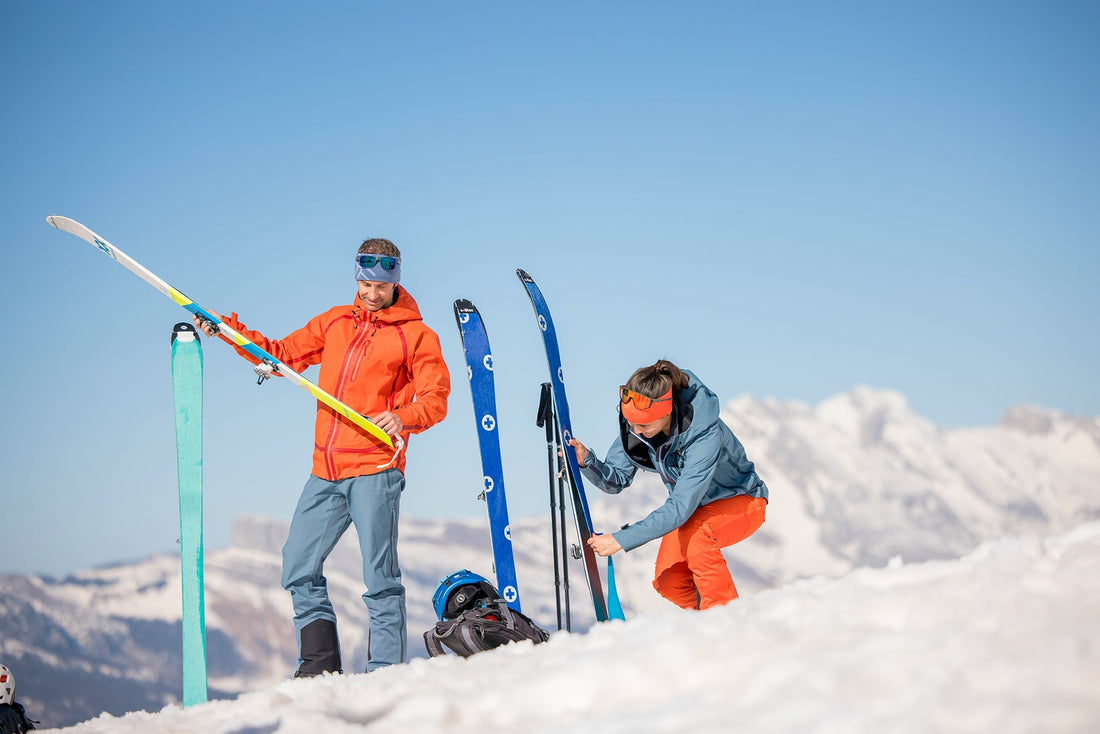Under the last spring snowflakes of the Jura, Vincent Defrasne guides a small group discovering ski touring. A day focused on mastering technical skills, managing effort, and immersing in the wild Haut-Jura, equipped for mountain conditions.
Spring Ski Touring Introduction in the Haut-Jura
In early April, a few centimeters of fresh snow covered the Jura high plateaus. Temperatures fluctuate between nighttime frost and mild daytime warmth. Ideal weather to strap on touring skis and enjoy the season’s last snow. Vincent Defrasne leads a group of five through Haut-Jura’s valleys and forests, introducing the discipline in stable, dry conditions typical of early spring.

Early Start at Les Rousses
Meeting at 7:30 AM at the Balancier parking lot in Les Rousses. The sky is clear, stars fading with dawn’s first light. Temperature hovers around –2 °C. Vincent Defrasne is already on site, ready to lead the day. Julien arrives shortly after with three other participants, all eager for a day of ski touring in the Haut-Jura.
Briefing and Gear Check
After a briefing on the route, snow conditions, and safety instructions, everyone carefully checks their equipment: skin attachment, boot adjustments, and avalanche transceiver test. Vincent emphasizes the importance of effort management, terrain observation, and choosing appropriate technical clothing.

First Efforts in the Forest
Firm, consistent snow eases progress among the fir trees. Vincent stresses flat ski placement for better grip and less effort, recommending a low, stable stride.
Crossing the Combe des Geais
As the forest thins, the combe opens to cold light. Vincent demonstrates adjusting the jacket and tightening layers. The group moves in single file, each at their own pace.
Ascent to Crêt Pela
The climb to Crêt Pela (1495 m) requires more technique. Vincent shows how to perform kick turns, emphasizing maintaining three points of contact with the ground.

Summit Break
From the summit, views stretch over valleys and the Alps. Snack and gear check. Vincent reminds the group of the importance of hydration and nutrition, even in cold conditions.
Descent to Loge à Ponard
The descent starts on hard snow, then becomes heavier. Vincent advises flexibility, anticipation, and looking ahead.

Forest Traverse
Slaloming between firs. A few falls highlight the need for active arms and adjusting speed to visibility.
Final Climb to Croix de la Serra
Skins back on for the last ascent. Vincent stresses calm breathing and steady pacing.
Return to Balancier
Last gentle descent to the parking lot. Faces show effort but satisfaction. A day rich in learning.
Route Map
- Start: Balancier Parking (Les Rousses)
- Ascent via Porte Trail
- Combe des Geais
- Climb to Crêt Pela (1495 m)
- Descent to Loge à Ponard
- Forest Traverse
- Ascent to Croix de la Serra
- Return to Balancier
Total distance: 14 km
Elevation gain: 850 m
Total duration: 6h (including breaks)

Equipment Used
- Technical Base Layer: 100% Merino wool T-shirt Mefonna
- Wind and Moisture Protection: Hardshell jacket Skora
- Technical Pants: Hardshell Nunatak
- Windproof Jackets: Shandar and Raven
Explore the full collection of technical ski touring apparel in our store: waterproof jackets, lightweight pants, merino wool layers.
Plan Your Outings
For more on routes and local conditions in the Jura, visit the Jura Tourist Office.
A focused, committed day marked by discovering ski touring, learning essential technical skills, and the challenge of Jura terrain perfectly suited for mountain adventure.


